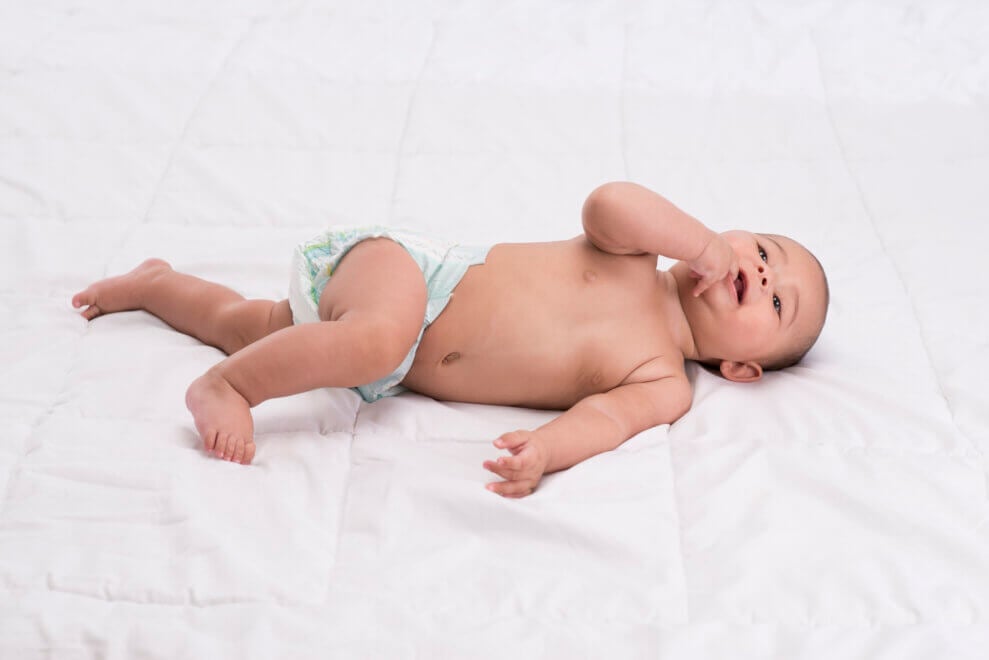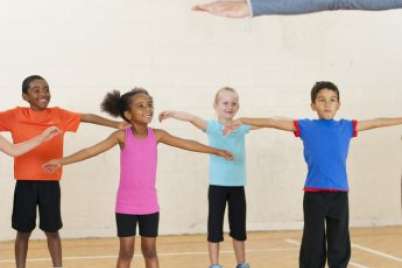
Physical literacy and physical development
We know that movement skills are essential to developing physical literacy. As children learn and practice new movement skills over time, they develop the confidence and motivation to use those skills to stay physically active.
But children need more than just teaching or practice to learn fundamental movement skills. Their skill development relies heavily on physical development, a complex process that is often overlooked.
Physical development and growth are different
Physical development is different from physical growth. The two are closely related, but mere physical growth over time doesn’t guarantee development.
Broadly speaking, physical development means the combination of growth, maturation, and motor skill development during childhood. It’s the integration and coordination of brain, muscles, and sensory awareness over time.
Children’s physical development is seen in how they move their bodies with increasing control year by year. As their brains and nervous systems grow, these structures become knitted to the muscles and sensory systems of the body, leading to greater degrees of physical coordination, balance, and agility.
The process relies on more than simply time and growth. The child’s environment is very important in integrating growth and learning.
Development happens through movement responses
For a child’s brain and central nervous system to become integrated with the different muscle groups and sensory systems, the child needs to experience environmental and sensory stimuli that either elicit movement or inform the child that some kind of movement has just occurred.
For example, when a baby rolls over from their stomach to their back, the vestibular system (inner ear) responds by telling the brain which way is up.
The more often the baby rolls over, the more often the vestibular system is asked to relay this message, and the stronger the neural connections between the inner ear and the brain grow.
Alternatively, when a child sees a toy that they want to hold, they willfully move their arms and hands to reach for it. Each time they reach, the neuromuscular connections required to perform “reaching” are strengthened.

Readiness in physical development
This is where things can get confusing. To engage in this process of movement discovery and response, the child needs to have already reached a level of “readiness” in terms of physical growth and maturation.
For example, imagine you want to teach a child how to throw a ball overhand with precision. If the child’s arms lack sufficient muscle strength and neuromuscular coordination to make a reasonable attempt at throwing with control, you’re asking the child to do more than they are physically ready to do.
If you still want to insist that they learn to throw, you may be wiser to simply encourage them to practice throwing pinecones at the park or stones at the beach until they develop enough strength and coordination to throw more accurately.
Milestones in physical development
According to the principle of readiness, there are recognized milestones in physical development for movement skills such as crawling, walking, and more. According to the U.S. Centers for Disease Control, the milestones listed below are things most children (75% or more) can do at that age.
Note: Keep in mind that each milestone age is approximate. The age for individual children may vary by a few months due to the fact that different children develop at different rates. Children with developmental delays may be particularly late in meeting these milestones, and parents with concerns should talk with their child’s doctor.
6 months
• Rolls from tummy to back
• Pushes up with straight arms when on tummy
• Leans on hands for support when sitting
9 months
• Sits up without assistance
• Remains sitting upright without support
1 year
• Pulls up to a standing position
• Walks while holding on to furniture
18 months
• Walks without holding anyone or anything
• Climbs on and off a sofa or chair without help
2 years
• Kicks a ball (with little or no control)
• Begins to run short distances
• Walks (not climbs) up a few stairs with or without help
30 months
• Throws overhand (with little or no control)
• Jumps in place with both feet
3 years
• Peddles a tricycle
• Puts on some clothes alone (e.g., loose pants or a jacket)
4 years
• Catches a large ball most of the time
• Holds crayon or pencil between fingers and thumb (not a fist)
5 years
• Hops on one foot
• Able to button some buttons

Milestone Tracker app
There are ways for parents to monitor their child’s developmental milestones. For example, the Centers for Disease Control offers the Milestone Tracker app. It helps parents track how their children play, learn, speak, and move from age 2 months to 5 years.
The app includes illustrated checklists and tips for encouraging development. It also provides notifications for when to act early and talk with your child’s doctor about any developmental concerns.
Children’s physical development is an important interest for every parent. The best practice is to ensure that our children get plenty of free play and interaction with caring adults throughout their early years. With the right environment and encouragement, our children and youth will become physically literate and engage in physical activity for life.





